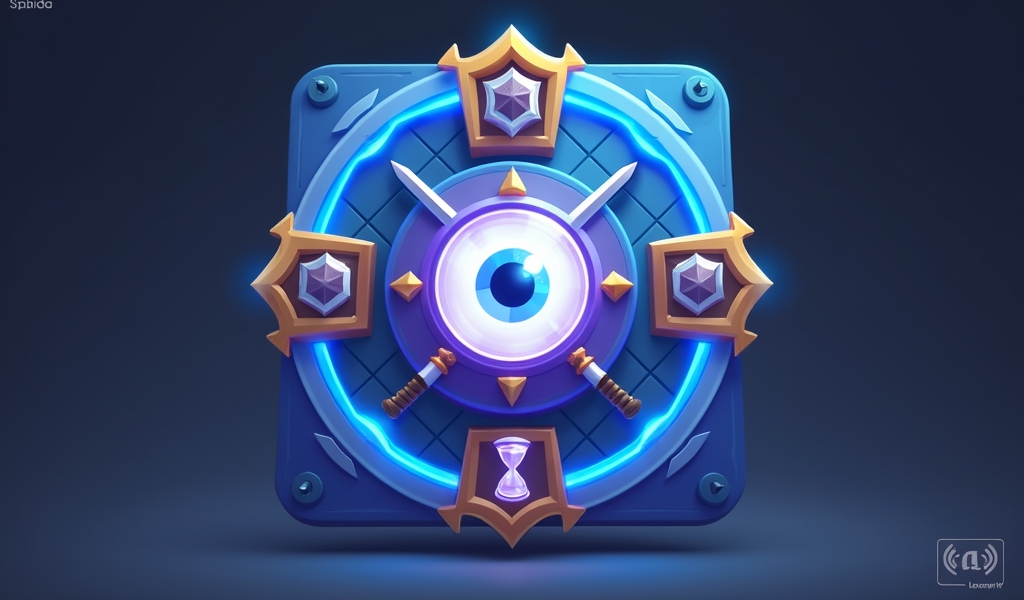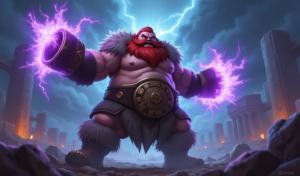Overview
The article presents five practical exercises to improve vision timing in League of Legends, emphasizing strategic ward placement, tracking, and denial techniques to gain map control advantages. These exercises—including ward tracking, vision score challenges, timing windows practice, map awareness conditioning, and vision denial—collectively help players develop crucial skills that differentiate high-performing players across all ranks.
Table of Contents
In the competitive world of League of Legends, your ability to improve vision timing can make the difference between a crushing defeat and a decisive victory. Vision control isn’t just about placing wards—it’s about strategic timing, map awareness, and creating information advantages that translate into game-winning plays. This guide explores five proven exercises designed specifically to sharpen your focus and elevate your vision game to the next level.
Whether you’re a support main looking to perfect your warding or a jungler wanting better tracking capabilities, these exercises will help you develop the vision timing skills that separate good players from great ones. Let’s dive into the techniques that will transform how you approach this crucial aspect of League of Legends.
Understanding Vision Timing in League of Legends
Vision timing in League of Legends refers to the strategic placement and removal of wards at optimal moments to maximize their value. More than just mechanical skill, proper vision timing requires game knowledge, awareness, and predictive thinking about enemy movements and objective spawns.
The foundation of good vision timing starts with understanding the game’s rhythm. Early game vision focuses on tracking the enemy jungler and preventing ganks. Mid-game vision shifts toward objective control and catching rotations. Late game vision becomes about securing Baron and Elder Dragon or setting up game-ending plays.
Players who master vision timing gain several advantages: they reduce deaths from ganks, secure more objectives, create pick opportunities, and maintain control over critical areas of the map. As you improve map awareness, your vision timing naturally becomes more effective.
Think of vision as a resource that must be managed efficiently. Like your gold or experience, vision has diminishing returns if used incorrectly. Each ward placed at the wrong time or location represents a missed opportunity elsewhere on the map.
Why Vision Timing Matters for Climbing Ranks
Vision timing becomes increasingly important as you climb the ranked ladder. In lower elos, players might place wards haphazardly without considering timing windows or strategic value. But at higher ranks, vision timing becomes a critical skill that directly impacts win rates.
When you improve vision timing, you enable better decision-making for your entire team. Knowledge of enemy positions allows junglers to plan optimal pathing, laners to play aggressively when safe, and teams to secure objectives without unnecessary risks. According to League of Graphs, players with higher vision scores consistently achieve higher win rates across all ranks.
Vision timing also creates pressure asymmetry on the map. Areas where you have vision but your opponents don’t become zones of control where you can make proactive plays. Conversely, areas where enemies have vision but you don’t become danger zones requiring cautious navigation.
Mastering vision timing is particularly valuable when improving objective control. By timing wards around Dragon, Baron, or Herald spawns, you create favorable setups for these game-changing objectives.

Exercise 1: The Ward Tracking Drill
The Ward Tracking Drill is a focused exercise to improve vision timing by developing your ability to track enemy ward placements and durations. This skill allows you to exploit gaps in enemy vision and time your ganks or rotations more effectively.
To practice this exercise:
- Start by playing 3-5 games where your primary focus is observing and noting when enemies place wards
- Use chat timestamps or a note-taking app to record ward placements
- Calculate when each ward will expire (regular wards last 90 seconds, control wards remain until destroyed)
- Communicate these timings to your team
- Plan ganks or objective plays around ward expiration timings
The key benefit of this exercise is developing a mental timer for enemy vision. Over time, you’ll naturally begin to feel when wards are about to expire, creating windows of opportunity for your team.
Remember to adapt this exercise based on your role. Junglers should focus on tracking wards along their pathing routes. Supports should prioritize tracking vision around objectives. Mid laners benefit from noting side brush wards that affect roaming potential.
After practicing consistently for 2-3 weeks, you’ll notice a significant improvement in your ability to time plays around vision advantages. This exercise is particularly effective when combined with LOL coaching sessions where a mentor can review your vision timing decisions.
Exercise 2: Vision Score Challenge
The Vision Score Challenge transforms warding from a forgettable chore into a competitive goal that helps improve vision timing. This exercise gamifies the vision aspect of League by setting progressive targets for your vision score.
Here’s how to implement this exercise:
- Check your average vision score from your last 10 games using the post-game stats
- Set a goal to increase this score by 10-15% over your next 10 games
- Focus not just on quantity but the quality and timing of ward placements
- Track which ward locations generate the most value (revealed enemies, prevented ganks)
- After each game, review the vision heat map to identify areas where your warding could improve
This challenge works best when you understand that vision score isn’t just about placing wards—it’s about placing them at optimal times and locations. A single well-timed ward that spots the enemy jungler can be worth more than three wards placed reactively.
To maximize your vision score, time your ward placements around objectives and enemy movements. Ward 30-45 seconds before Dragon or Baron spawns. Place wards along expected enemy rotation paths before they arrive. Deny vision by clearing enemy wards just before your team makes a play.
Many professional League of Legends coaching programs emphasize vision score as a key performance indicator. As InvenGlobal explains, vision score often correlates strongly with win rates at the highest levels of play.
Exercise 3: Timing Windows Practice
Timing Windows Practice focuses on synchronizing your vision control with key game events and timers. This exercise helps you improve vision timing by aligning ward placements with predictable game patterns.
Follow these steps to master timing windows:
- Create a list of critical timing windows (jungle buff spawns, dragon/herald timers, back timings)
- For 5 consecutive games, focus exclusively on placing wards 30-45 seconds before these events
- Track instances where your perfectly-timed vision directly prevented enemy plays or enabled your team’s plays
- Practice placing deep wards during safe windows (after enemy recalls, when you have lane priority)
- Review replays to identify missed timing opportunities
The power of timing windows becomes especially evident when you’re working on improving wave management. Properly timed vision allows you to make better decisions about wave manipulation, knowing when you can safely push or when you need to freeze.
One advanced technique is “vision trading”—purposefully allowing one area to have less vision temporarily to strengthen vision in a more critical area. For example, sacrificing top-side vision temporarily to establish stronger dragon-side control before the objective spawns.
This exercise is particularly valuable for support and jungle players who coordinate their vision efforts. When these roles synchronize their ward timings, the team’s vision control becomes significantly more effective, often creating a vision net that catches enemy movements across the map.
Exercise 4: Map Awareness Conditioning
Map Awareness Conditioning is a disciplined approach to improve vision timing by training your attention to regularly check the minimap. This exercise builds the mental habits necessary for effective vision utilization.
Try this structured approach:
- Set a quiet metronome or timer to beep every 5-10 seconds during games
- Each time it sounds, glance at your minimap and note enemy positions (or last known positions)
- Gradually increase the time between checks as the habit forms
- Practice “reading between the dots” by predicting enemy movements when they’re not visible
- Connect these observations to your warding strategy, placing wards to confirm your predictions
This conditioning method works by forming a neurological habit. After sufficient practice, checking the map becomes automatic rather than requiring conscious effort. This frees your mental resources for decision-making rather than remembering to look at the map.
Map awareness conditions you to notice subtle patterns, like when the enemy jungler appears on the opposite side of the map, creating a safe window for aggressive plays or deep warding in your lane. These insights are invaluable when improving your laning phase.
For players serious about climbing, combining this exercise with online LoL coaching can accelerate improvement. A coach can review your map awareness habits and suggest personalized adjustments to your vision timing strategy.

Exercise 5: Vision Denial Techniques
Vision Denial Techniques focus on the offensive aspect of vision control—removing enemy sight rather than establishing your own. This exercise helps you improve vision timing by developing your ability to blind opponents at strategically crucial moments.
Master these vision denial techniques:
- Practice sweeper timing by using Oracle Lens 15-20 seconds before objective plays
- Learn the common ward spots for each elo bracket and prioritize clearing them
- Coordinate with teammates to “vision choke” critical areas before major objectives
- Practice the “bait and sweep” technique by pretending to start an objective, then sweeping when enemies approach to check
- Track the enemy support’s warding patterns and counter their habits
The psychology behind vision denial is powerful. When you systematically remove enemy vision, you create anxiety and uncertainty for opponents. They must either face-check dangerous areas (risking death) or concede map control and objectives.
As you advance, incorporate vision denial into your overall macro strategy. Timing your sweeper usage around key objectives becomes second nature to high-elo players and professionals. According to LoL Esports analysis, teams that control vision around Baron typically have win rates above 70% when they secure the objective.
Remember that vision denial timing differs by game phase. Early game denial focuses on enabling ganks. Mid-game denial centers on objectives. Late game denial creates pick opportunities that can end the game. For League coaching for beginners, understanding these phases is crucial for vision mastery.
Measuring Your Vision Timing Progress
To truly improve vision timing, you need concrete metrics to track your development. Fortunately, League of Legends provides several data points that can help you measure progress in this crucial skill.
Key metrics to monitor include:
- Vision Score per minute (aim for 1.5-2.0 for supports, 1.0-1.5 for junglers, 0.7-1.2 for other roles)
- Control Ward count per game (3-5 minimum regardless of role)
- Vision denial score (how many enemy wards you’ve helped destroy)
- Vision uptime percentage around major objectives before they spawn
- Correlation between your vision control and objective secure rate
Review these stats after every 10-game block to identify trends. Are you consistently improving? Which aspects of vision timing need more work? Tools like OP.GG, Mobalytics, or League of Graphs can help track these metrics over time.
Don’t just focus on raw numbers. The quality and timing of your vision matter more than quantity. A well-timed control ward that secures Baron is worth more than five poorly placed stealth wards that provide minimal value.
Consider recording and reviewing your games with a specific focus on vision timing decisions. Note situations where better vision timing could have prevented deaths or secured advantages. This reflective practice accelerates improvement more effectively than simply playing more games.
Tools and Resources for Vision Improvement
To maximize your vision timing improvement, leverage these specialized tools and resources designed for serious League players. These resources can accelerate your learning curve significantly.
Helpful vision timing resources include:
- Warding guides for your specific role from sites like Mobalytics or ProGuides
- Heat maps showing optimal ward placements based on game phase
- Vision timing apps like Blitz.gg that provide automated reminders
- VOD reviews of high-elo players focusing on their vision control patterns
- Practice tool sessions for testing ward placements and vision ranges
One particularly effective approach is to watch professional play with a focus exclusively on vision control. Turn off the commentary and observe only how pros time their wards around objectives, enemy movements, and team plays.
Consider investing in a notebook or digital document dedicated to vision timing insights. Note patterns you observe in your games, ward spots that consistently provide value, and timing windows that seem particularly impactful for your main role or champion pool.
Remember that vision timing is a team effort. Use the in-game ping system to communicate your vision plans with teammates. A simple “On my way” ping before warding or “Assist me” ping when clearing enemy vision can dramatically improve your team’s collective vision control.
Conclusion
Mastering vision timing is one of the most underrated yet impactful skills in League of Legends. By implementing the five exercises outlined in this guide—Ward Tracking, Vision Score Challenge, Timing Windows Practice, Map Awareness Conditioning, and Vision Denial Techniques—you can dramatically improve vision timing and elevate your gameplay.
Remember that consistency is key. These exercises build neural pathways and game sense that develop over time rather than overnight. Commit to practicing them regularly, and you’ll see gradual but significant improvements in your decision-making, objective control, and win rate.
Vision timing excellence separates good players from great ones at every elo. Whether you’re trying to escape Bronze or pushing for Diamond, the ability to place the right ward at the right time creates opportunities that less vision-conscious players simply cannot access.
Start implementing these exercises today, measure your progress, and watch as your improved vision timing translates into more victories on the Rift. Your climb awaits—just make sure you have proper vision for the journey ahead.
Frequently Asked Questions
How often should I buy control wards in League of Legends?
You should purchase 1-2 control wards on every back where you have 75 gold to spare, regardless of your role. Support and jungle players should aim for 5+ control wards per game, while other roles should target at least 3-4.
What’s the ideal vision score to aim for in a 30-minute game?
Support players should aim for 45-60 vision score, junglers for 30-45, and laners for 20-35 in a 30-minute game. However, the quality and timing of your vision matter more than just the raw score number.
When is the best time to swap to Oracle Lens (red trinket)?
Junglers should typically swap after their first back, supports after completing their warding quest item, and laners when transitioning to mid-game teamfights. Always ensure your team maintains a balance of vision trinkets.
How can I improve vision timing as a mid laner specifically?
Focus on warding one side of mid lane based on your jungler’s position, time wards around your roaming windows, and use control wards to secure the pixel brush for your team. Track enemy mid roams with strategic deep wards.
Does vision timing matter less in low elo games?
While vision might be less utilized by teammates in lower elo, mastering vision timing gives you a significant advantage even in Bronze or Silver. Good vision habits will accelerate your climb and prepare you for higher ranks where vision becomes increasingly crucial.




